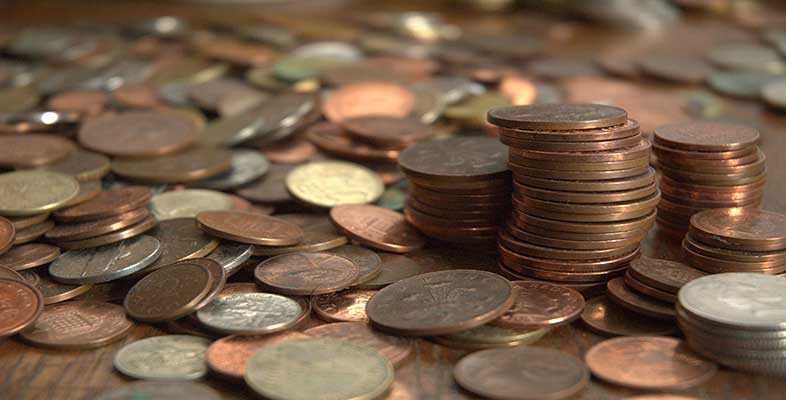2.4 A simplified UK balance sheet format
How do businesses in the UK most commonly present information in the balance sheet?
In the UK, balance sheets are commonly prepared in a vertical format of the accounting equation. This gives the owners clear information about the net assets of the enterprise, which always equals their capital or owner ’s interest in the enterprise. The balance sheet is normally produced at the end of each trading or financial year and is a snapshot of the financial position of the business on the last day of the financial year. For learning purposes we will compile a UK balance sheet for Edgar Edwards Enterprises above at the end of its sixth day of trading.
A simple vertical balance sheet format could look like this:
| Assets | £ |
|---|---|
| Furniture | 400 |
| Computer | 600 |
| Bank (£5,000–£600+£5,000–£200–£50) | 9,150 |
| Total assets (A) | 10,150 |
| Liabilities | |
| Bank loan | 5,000 |
| Creditors (£400-£200) | 200 |
| Total liabilities (L) | 5,200 |
| Net assets (A - L) | Total 4,950 |
| Capital (C) | Total 4,950 |
Activity 16
Fill in the missing values in Table 10 in order to prepare a new balance sheet after each of the six transactions by Edgar Edwards Enterprises we have seen in Section 2.3. (The first and last columns have been done for you.). You may find it easier to work on a piece of paper before inputting your answers into the box.
| 1 July 20X2 | 2 July 20X2 | 3 July 20X2 | 4 July 20X2 | 5 July 20X2 | 6 July 20X2 | |
|---|---|---|---|---|---|---|
| £ | £ | £ | £ | £ | £ | |
| Assets | ||||||
| Furniture | 0 | 400 | ||||
| Computer | 0 | 600 | ||||
| Bank | 5,000 | 9,150 | ||||
| Total Assets (A) | 5,000 | 10,150 | ||||
| Liabilities | ||||||
| Bank loan | 0 | 5,000 | ||||
| Creditors | 0 | 200 | ||||
| Total liabilities (L) | 0 | 5,200 | ||||
| Net Assets (A-L) | Total 5,000 | Total 4,950 | ||||
| Capital (C) | Total 5,000 | Total 4,950 |
Answer
| 1 July 20X2 | 2 July 20X2 | 3 July 20X2 | 4 July 20X2 | 5 July 20X2 | 6 July 20X2 | |
|---|---|---|---|---|---|---|
| £ | £ | £ | £ | £ | £ | |
| Assets | ||||||
| Furniture | 0 | 400 | 400 | 400 | 400 | 400 |
| Computer | 0 | 0 | 600 | 600 | 600 | 600 |
| Bank | 5,000 | 5,000 | 4,400 | 9,400 | 9,200 | 9,150 |
| Total Assets (A) | 5,000 | 5,400 | 5,400 | 10,400 | 10,200 | 10,150 |
| Liabilities | ||||||
| Bank loan | 0 | 0 | 0 | 5,000 | 5,000 | 5,000 |
| Creditors | 0 | 400 | 400 | 400 | 200 | 200 |
| Total liabilities (L) | 0 | 400 | 400 | 5,400 | 5,200 | 5,200 |
| Net Assets (A-L) | Total 5,000 | Total 5,000 | Total 5,000 | Total 5,000 | Total 5,000 | Total 4,950 |
| Capital (C) | Total 5,000 | Total 5,000 | Total 5,000 | Total 5,000 | Total 5,000 | Total 4,950 |
It can be clearly seen in the six balance sheets above that each new financial transaction leads to new figures in the accounting equation A – L =C and thus a new balance sheet. Normally, however, it is not seen as useful information to have a new balance sheet after each transaction. Rather, an ongoing record or account is kept of each sub-heading or sub-category in the balance sheet (Furniture, Computer, Bank, Bank loan, etc.) and at the end of the financial period the final figures or balances for all the individual sub-categories are put together to produce an end-of-period balance sheet.
These sub-categories in the balance sheet correspond to the accounts in a book called the nominal ledger or general ledger or ledger for short. (Ledger is an old word that means book.) There would thus be a ledger account called ‘Bank’, for example, which records every financial transaction affecting the bank. After each relevant transaction involving the bank account, the net figure or balance in the bank account would either go up or down.
Information point
With the advent of computerised accounting, a new balance sheet, reflecting the new figures in the accounting equation, can automatically be generated after each business transaction. Businesses, however, only publish the balance sheet at the end of a financial period, normally a year, as it is this balance sheet that is required by law and other forms of regulation.
